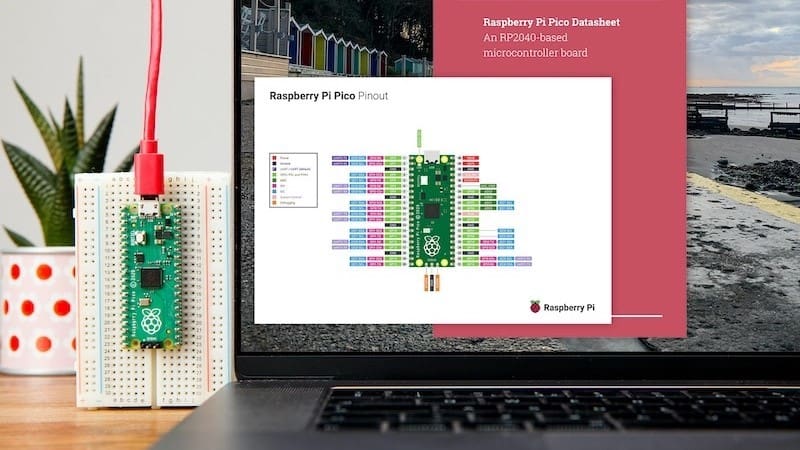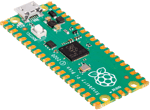A New Pi Fresh Out the Oven
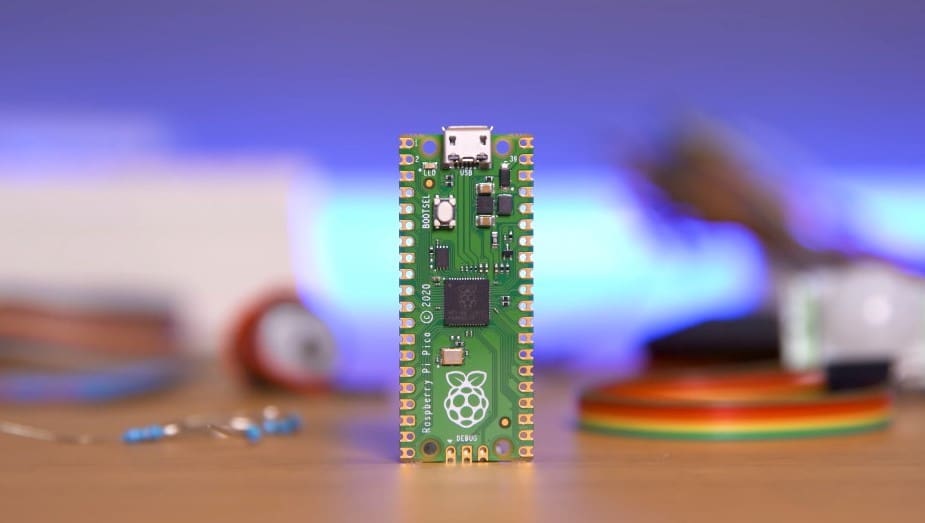
Introducing the newest member of the Raspberry Pi family, the Raspberry Pi Pico. This tiny board brings the power of a microcontroller in a miniature form for less than $5! The Pico comes with an exciting new chip, the RP2040, and can support programs written in MicroPython and C/C++.
Don’t let its size fool you – this microcontroller was made for beginners and experts alike who want to minimize their projects’ form factor while having all the attributes a Pi can bring. Besides the basic “Hello World” and LED blink programs, the Pico has already been used in making projects like an 8-bit game emulator, weather station, and auto clickers for mobile games. And it was only released in January 2021!
In this article, we will be going over what makes this microcontroller special, how it stacks up against a couple of comparable boards, and why you should try one for your next project.
Features
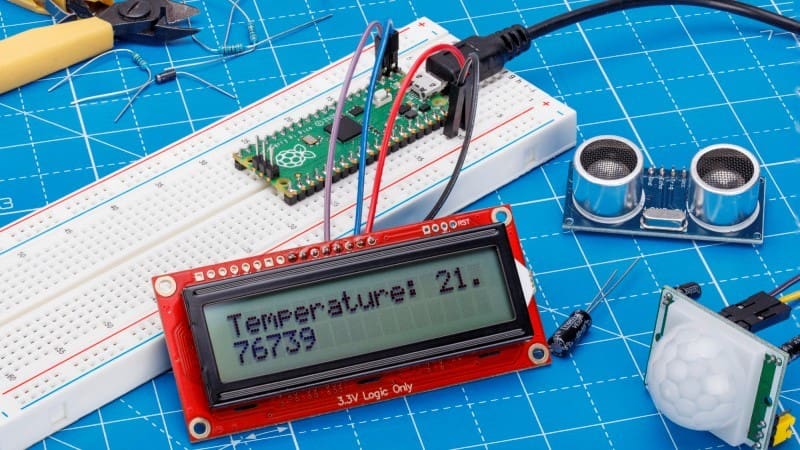
The Pico differs from the rest of the Raspberry Pi family because it functions as a microcontroller rather than a single-board computer (SBC). With this in mind, the following features can be noted:
Drag and drop: The Pico doesn’t come with an operating system but can still be programmed using a computer or another Raspberry Pi. When connected to these devices, the Pico shows up as a mass-storage device, where programs written in MicroPython or C++ can be dragged and dropped, uploading them to the board.
Speed: Instead of having a clock that runs in the few-gigahertz range, like traditional Pis, the Pico has an onboard dual-core ARM processor that can reach frequencies of up to 133 MHz.
Integration: The Pico is made with pads that can be soldered onto a printed circuit board (PCB) or to pins to go on a breadboard. So whatever the application, you’ll have mobility. You’ll also be able to use the Pico for even bigger projects, like playing music or controlling stepper motors, as more and more breakout boards become available.
Pins: The Pico has 30 GPIO pins (4 of these can be used for analog input), 2 SPI and I2C controllers, 2 UARTs, and 16 PWM channels. This gives a lot of versatility to run a variety of projects. There are also pins opposite the Micro-USB port, which can be used to program the board directly using another Raspberry Pi.
Code: The Pico can be programmed using Micropython, C, and C++, and programs can then be dragged and dropped to the Pico when it’s in boot mode. Soon, there will also be integrated development environment (IDE) support for Visual Studio and Eclipse.
Conservation: Because the Pico doesn’t have an operating system, its hardware doesn’t need as much power as other Pis. Indeed, it runs perfectly fine with 1.8-5.5 V DC, meaning you could easily run it on a battery to make it more portable. The Pico also features low-power sleep and dormant modes, and since it doesn’t run Linux, the program uploaded to it will automatically run when turned on.
Price: This device made its mark on release for its incredible (under $5) price, making it attractive to those wanting to set up multi-device projects. As you may have guessed, this controller has been flying off retail shelves.
The Bottom Line
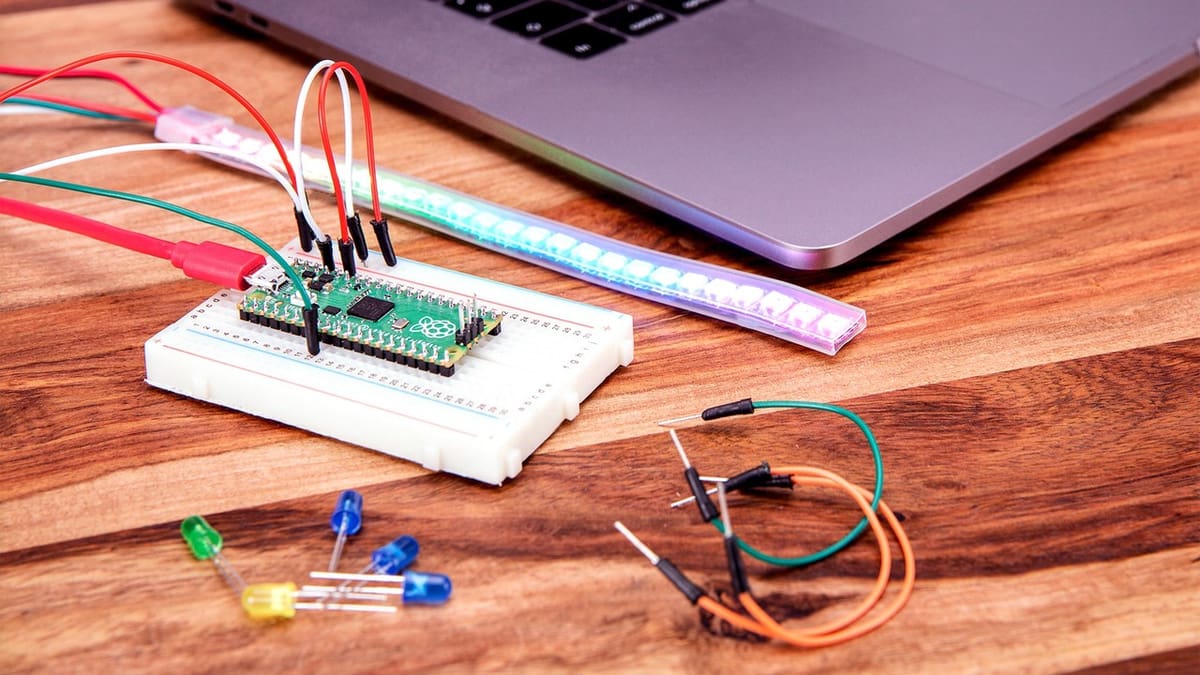
The Pico introduces makers to a new option in the Raspberry Pi family, where the board can be used as an easily-programmable microcontroller at an advantageous price. But what about the Pi Zero, which is only slightly larger than the Pico but smaller than the traditional Pi? The Pico and the Zero vary little on price and size, so where’s the divide?
The Zero, like most Raspberry Pis, runs a Linux-based operating system, by default. Equipped with an operating system, the Zero can be used as a more portable-sized version of the larger Pi models with all the same capabilities. There’s even the Raspberry Pi Zero W, which is equipped with Wi-Fi and Bluetooth receivers. To achieve similar capabilities with the Pico, you would need an additional breakout board, which would add to the size of your project and might require some troubleshooting to implement.
There are also other microcontrollers, such as Arduinos, whose models vary in size and capabilities. Let’s take the Arduino Uno, for example. The Pico has an advantage over the Arduino in terms of clock speed, as it can run up to 133 MHz, while the Uno has a maximum of only 16 MHz. The Pico also has an advantage for beginner users, as it doesn’t require an IDE to be programmed. The Pico can be connected to a computer or a Pi as a storage device and the programs can be simply dragged and dropped to it.
Overall, as a microcontroller, the Pico offers fast performance and an easy-to-implement option for projects. This tiny microcontroller is meant to get things done. With its low price tag and impressive capabilities, it’s a great option for when you want to get multiple projects or multi-device projects off your plate. That said, if you’re looking for something more adaptive and intuitive, like a personal computer, you would probably have to go to a more powerful SBC like the Raspberry Pi 4.
Specifications
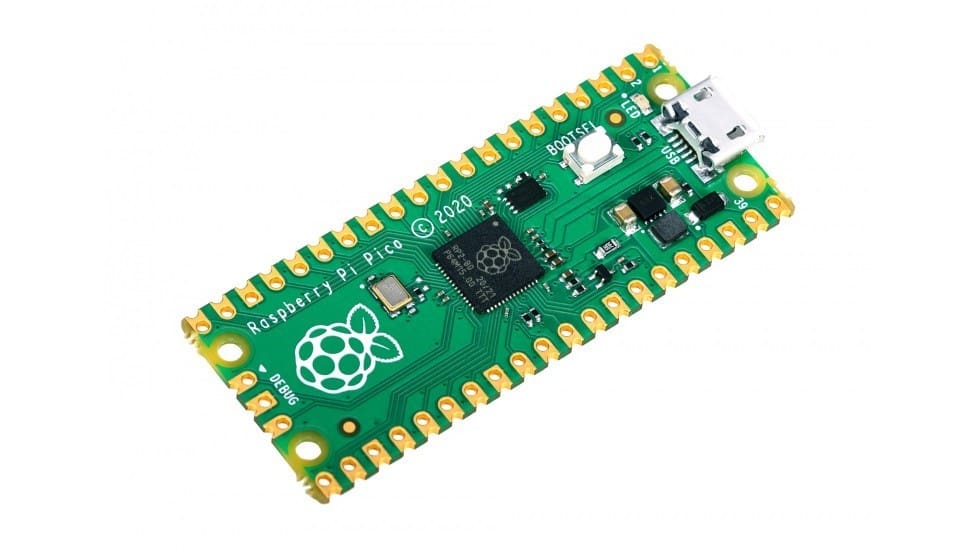
If you’re into the numbers, these are the technical specifications of the Raspberry Pi Pico:
- Size: 21 × 51 mm
- Processor: Dual-core ARM Cortex-M0+
- Clock: Up to 133 MHz
- Memory: 264 kB SRAM, 2 MB QSPI Flash
- Ports:
- 26x multi-function GPIO pins
- 3x analog inputs
- 2x UARTx
- 2x SPI controllers
- 2x I2C controllers
- 16x PWM channels
- 8x programmable I/O state machines for custom peripheral support
- Input power: 1.8-5.5 V DC
- Operating temperature: -20 to 85 °C
- Onboard sensor: Temperature sensor
- Libraries: Accelerated integer and floating-point
- Price: ~$4
Where to Buy
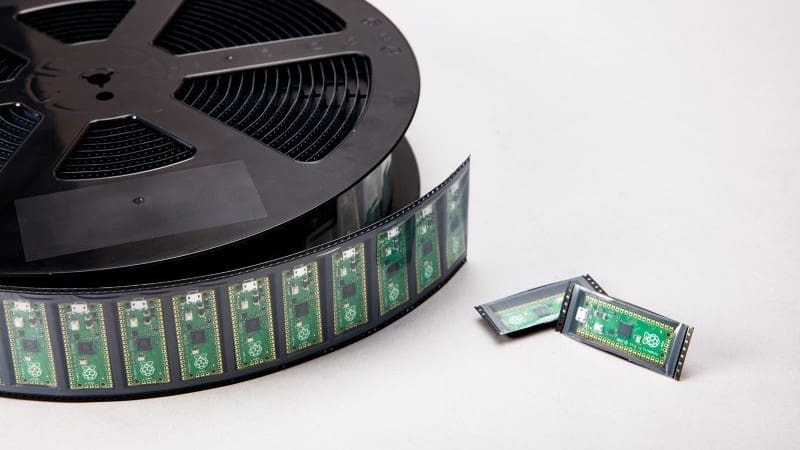
Due to its popularity, a lot of retailers are out of stock, but some do give pre-order options in anticipation of restocking. You can check price and availability with the following retailers:
Lead image source: Raspberry_Pi via Twitter
License: The text of "Raspberry Pi Pico: Review the Specs" by All3DP is licensed under a Creative Commons Attribution 4.0 International License.
CERTAIN CONTENT THAT APPEARS ON THIS SITE COMES FROM AMAZON. THIS CONTENT IS PROVIDED ‘AS IS’ AND IS SUBJECT TO CHANGE OR REMOVAL AT ANY TIME.

